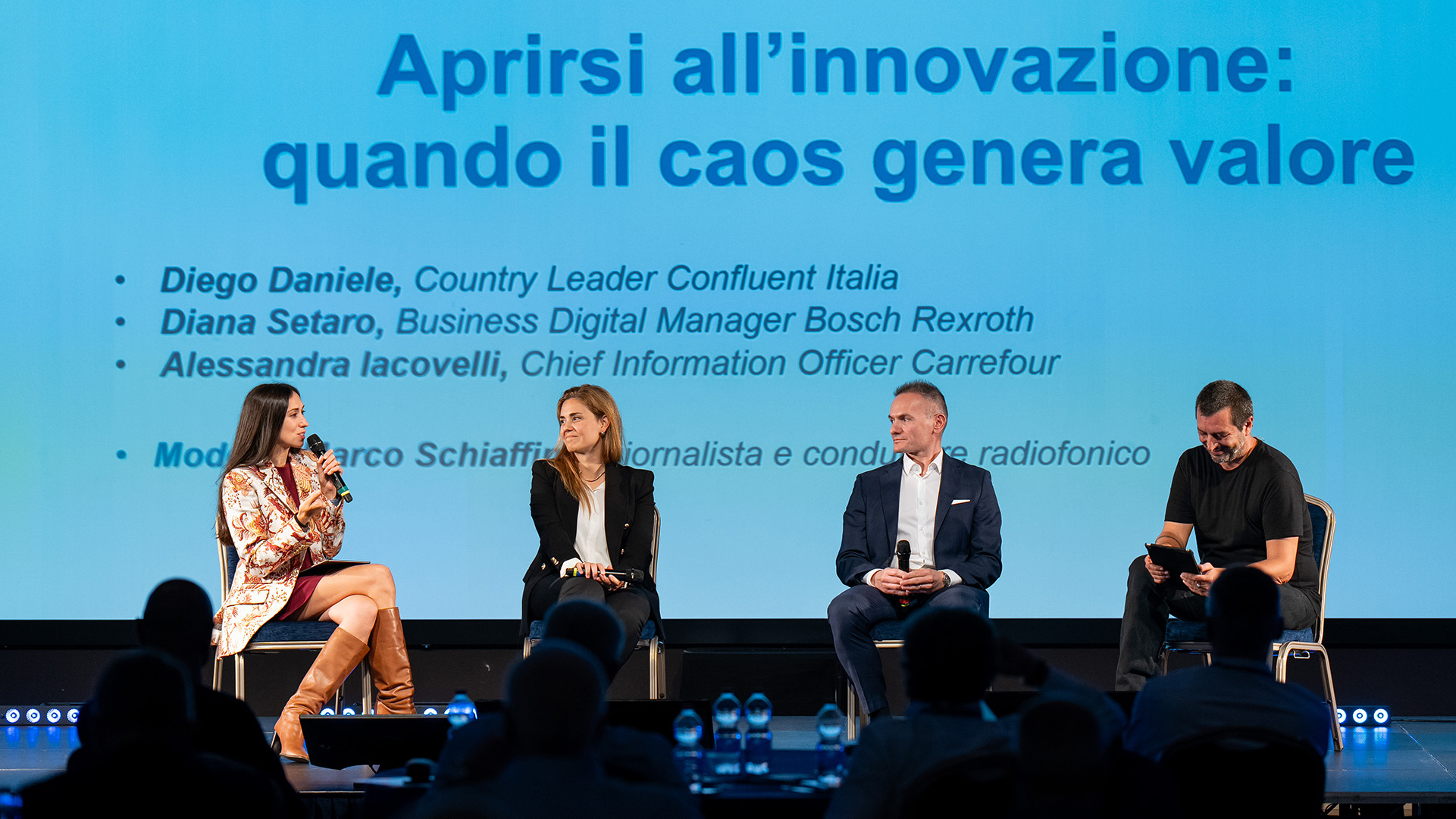In occasione dell’edizione americana del Symposium/ITxpo 2009 (Orlando, 18-22 ottobre), Gartner ha illustrato quelle che, secondo la società di analisi, saranno le tecnologie più strategiche per la maggior parte delle organizzazioni nel corso del 2010. Le tematiche saranno riprese e discusse anche alla prossima edizione del simposio, in programma dal 2 al 5 novembre a Cannes.
Gartner definisce strategiche le tecnologie che potenzialmente avranno il maggiore impatto sull’organizzazione delle aziende nell’arco dei prossimi tre anni. Conseguentemente, sono quelle su cui la società ritiene che le imprese dovranno impostare piani di lungo termine, programmi e iniziative. Secondo David Cearley, vice presidente e “distinguished analyst” di Gartner, “le aziende dovrebbero includere le dieci tecnologie più strategiche nel loro processo di pianificazioni ponendosi domande e prendendo decisioni su di esse nei prossimi due anni”.
Quali sono le Top 10 Technologies per il 2010? Gartner le elenca come segue: Cloud Computing, Advanced Analytics, Client Computing, It for Green, Reshaping the Data Centre, Social Computing, Security – Activity Monitoring, Flash Memory, Virtualization for Availability e Mobile Applications.
Per ulteriori informazioni: www.gartner.com/eu/symposium .
——————————-
Per approfondire gli aspetti qualificanti delle tecnologie strategiche per il 2010 evidenziate da Gartner, pubblichiamo il comunicato integrale della società di ricerca
Gartner Identifies the Top 10 Strategic Technologies for 2010
Analysts Examine Latest Industry Trends During Gartner Symposium/ITxpo 2009, 2-5 November, in Cannes, France
Orlando, Fla., October 20, 2009 — Gartner, Inc. analysts today highlighted the top 10 technologies and trends that will be strategic for most organisations in 2010. The analysts presented their findings during Gartner Symposium/ITxpo 2009, being held here through 22 October and in Cannes on 2-5 November.
Gartner defines a strategic technology as one with the potential for significant impact on the organisation in the next three years. Factors that denote significant impact include a high potential for disruption to IT or the business, the need for a major dollar investment, or the risk of being late to adopt.
These technologies impact the organisation’s long-term plans, programmes and initiatives. They may be strategic because they have matured to broad market use or because they enable strategic advantage from early adoption.
“Companies should factor the top 10 technologies into their strategic planning process by asking key questions and making deliberate decisions about them during the next two years,” said David Cearley, vice president and distinguished analyst at Gartner. “However, this does not necessarily mean adoption and investment in all of the technologies. They should determine which technologies will help and transform their individual business initiatives.”
The top 10 strategic technologies for 2010 include:
Cloud Computing. Cloud computing is a style of computing that characterises a model in which providers deliver a variety of IT-enabled capabilities to consumers. Cloud-based services can be exploited in a variety of ways to develop an application or a solution. Using cloud resources does not eliminate the costs of IT solutions, but does re-arrange some and reduce others. In addition, consuming cloud services enterprises will increasingly act as cloud providers and deliver application, information or business process services to customers and business partners.
Advanced Analytics. Optimisation and simulation is using analytical tools and models to maximise business process and decision effectiveness by examining alternative outcomes and scenarios, before, during and after process implementation and execution. This can be viewed as a third step in supporting operational business decisions. Fixed rules and prepared policies gave way to more informed decisions powered by the right information delivered at the right time, whether through customer relationship management (CRM) or enterprise resource planning (ERP) or other applications. The new step is to provide simulation, prediction, optimisation and other analytics, not simply information, to empower even more decision flexibility at the time and place of every business process action. The new step looks into the future, predicting what can or will happen.
Client Computing. Virtualisation is bringing new ways of packaging client computing applications and capabilities. As a result, the choice of a particular PC hardware platform, and eventually the OS platform, becomes less critical. Organisations should proactively build a five to eight year strategic client computing roadmap outlining an approach to device standards, ownership and support; operating system and application selection, deployment and update; and management and security plans to manage diversity.
IT for Green. IT can enable many green initiatives. The use of IT, particularly among the white collar staff, can greatly enhance an organisation’s green credentials. Common green initiatives include the use of e-documents, reducing travel and teleworking. IT can also provide the analytic tools that others in the organisation may use to reduce energy consumption in the transportation of goods or other carbon management activities.
Reshaping the Data Centre. In the past, design principles for data centres were simple: Figure out what you have, estimate growth for 15 to 20 years, then build to suit. Newly-built data centres often opened with huge areas of white floor space, fully powered and backed by an uninterruptible power supply (UPS), water-and air-cooled and mostly empty. However, costs are actually lower if organisations adopt a pod-based approach to data centre construction and expansion. If 9,000 square feet is expected to be needed during the life of a data centre, then design the site to support it, but only build what’s needed for five to seven years. Cutting operating expenses, which are a nontrivial part of the overall IT spend for most clients, frees up money to apply to other projects or investments either in IT or in the business itself.
Social Computing. Workers do not want two distinct environments to support their work – one for their own work products (whether personal or group) and another for accessing “external” information. Organisations must focus both on use of social software and social media in the organisation and participation and integration with externally facing enterprise-sponsored and public communities. Do not ignore the role of the social profile to bring communities together.
Security – Activity Monitoring. Traditionally, security has focused on putting up a perimeter fence to keep others out, but it has evolved to monitoring activities and identifying patterns that would have been missed before. Information security professionals face the challenge of detecting malicious activity in a constant stream of discrete events that are usually associated with an authorised user and are generated from multiple network, system and application sources. At the same time, security departments are facing increasing demands for ever-greater log analysis and reporting to support audit requirements. A variety of complimentary (and sometimes overlapping) monitoring and analysis tools help organisations better detect and investigate suspicious activity – often with real-time alerting or transaction intervention. By understanding the strengths and weaknesses of these tools, organisations can better understand how to use them to defend the organisation and meet audit requirements.
Flash Memory. Flash memory is not new, but it is moving up to a new tier in the storage echelon. Flash memory is a semiconductor memory device, familiar from its use in USB memory sticks and digital camera cards. It is much faster than rotating disk, but considerably more expensive, however this differential is shrinking. At the rate of price declines, the technology will enjoy more than a 100 per cent compound annual growth rate during the new few years and become strategic in many IT areas including consumer devices, entertainment equipment and other embedded IT systems. In addition, it offers a new layer of the storage hierarchy in servers and client computers that has key advantages including space, heat, performance and ruggedness.
Virtualisation for Availability. Virtualisation has been on the list of top strategic technologies in previous years. It is on the list this year because Gartner emphases new elements such as live migration for availability that have longer term implications. Live migration is the movement of a running virtual machine (VM), while its operating system and other software continue to execute as if they remained on the original physical server. This takes place by replicating the state of physical memory between the source and destination VMs, then, at some instant in time, one instruction finishes execution on the source machine and the next instruction begins on the destination machine.
However, if replication of memory continues indefinitely, but execution of instructions remains on the source VM, and then the source VM fails the next instruction would now place on the destination machine. If the destination VM were to fail, just pick a new destination to start the indefinite migration, thus making very high availability possible.
The key value proposition is to displace a variety of separate mechanisms with a single “dial” that can be set to any level of availability from baseline to fault tolerance, all using a common mechanism and permitting the settings to be changed rapidly as needed. Expensive high-reliability hardware, with fail-over cluster software and perhaps even fault-tolerant hardware could be dispensed with, but still meet availability needs. This is key to cutting costs, lowering complexity, as well as increasing agility as needs shift.
Mobile Applications. By year-end 2010, 1.2 billion people will carry handsets capable of rich, mobile commerce providing a rich environment for the convergence of mobility and the web. There are already many thousands of applications for platforms such as the Apple iPhone, in spite of the limited market and need for unique coding. It may take a newer version that is designed to flexibly operate on both full PC and miniature systems, but if the operating system interface and processor architecture were identical, that enabling factor would create a huge turn upwards in mobile application availability.
“This list should be used as a starting point and companies should adjust their list based on their industry, unique business needs and technology adoption mode,” said Carl Claunch, vice president and distinguished analyst at Gartner. “When determining what may be right for each company, the decision may not have anything to do with a particular technology. In other cases, it will be to continue investing in the technology at the current rate. In still other cases, the decision may be to test/pilot or more aggressively adopt/deploy the technology.”
Gartner analysts will examine latest industry trends at the Gartner Symposium/ITxpo 2009, 2-5 November, in Cannes, France. Additional information is available at www.gartner.com/eu/symposium

















